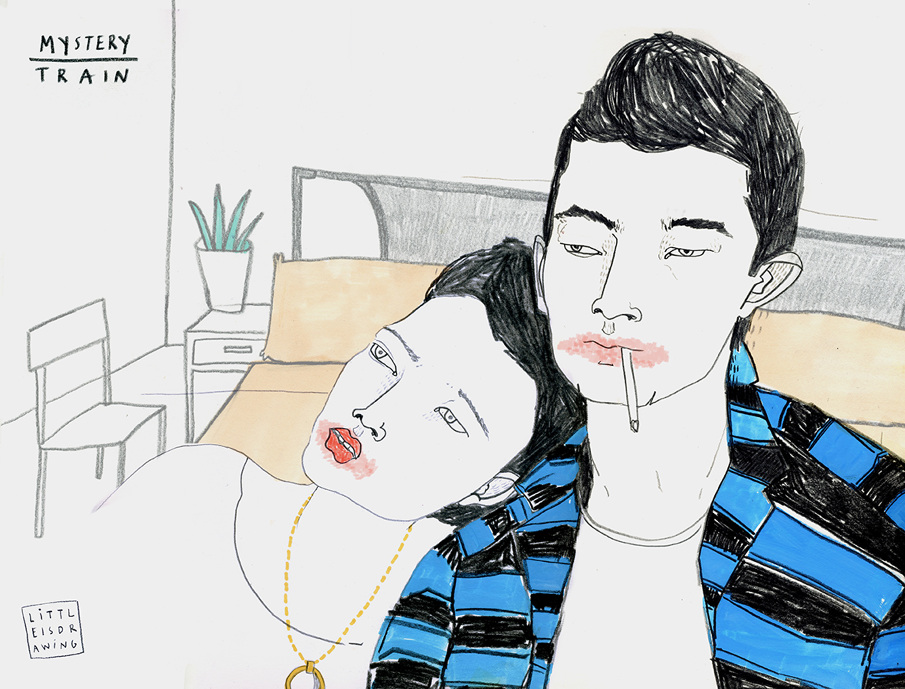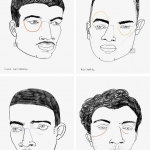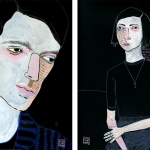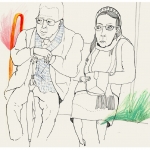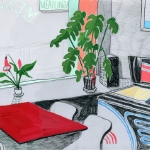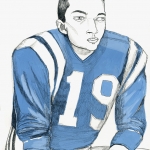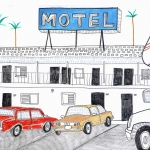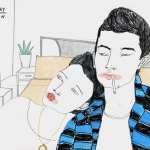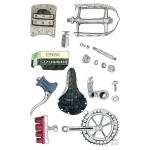Donned with flaws and fine detail, Carla Fuentes’ illustrations pull the eye in an honest direction, accentuating the otherwise lost beauties of an imperfect existence. For the Spanish-bred illustrator, the perceived strangeness of normality has a constant sway on her work, calling out idealism with reality in a surprising and beautiful manner.
With a particular, perhaps peculiar method of stark detail—repetitive strokes and color blocking to induce blemishes, wrinkles and truth—Fuentes nails down the human form with itemized construction, telling profuse, precise stories through her mini-series illustrations. Building on documented events and people, her series shed candid light on the emotions of a single moment and the feelings pent-up in the “unattractive,” vulnerable individual.
Encouraged by both contemporary and classic works, Fuentes’ distinct images lend themselves to an inclusive range of works, breaching the likes of Esquire and Forbes, various album covers and well-liked fashion brands. We got to know Carla Fuentes with a fun Q&A session:
Give us the abbreviated Carla Fuentes bio.
I was born in Valencia, Spain, and I’m 27. Since I can remember I was always messing around with drawings—it has always been a part of my life. I focused my studies more on my creative side, first on fashion design then in Arts. I remember myself sewing and wanting to be a tailor, but I ended up making illustrations, and found myself really passionate about it.
Without overthinking it, use one word—the first to naturally pop into your head— to describe your artistic style. 1…2…3…GO!
I always struggle defining myself, and defining what I really do. I think its easier for people to define my style than me to do it myself. But basically I think it’s simple, cosy, spontaneous and ugly…yes..ugly.
I love strange faces, where you can lose yourself in the irregularities, I love when I see beauty in something irregular, when reality surprises me. I dislike when faces are symmetrical and perfect.
I’m not looking forward to the day when I see a grandmother hanging a drawing above the fireplace. I’m not looking for this intention at all.
Can you explain “Little is drawing” for us?
I always looked younger than I am, and at school a friend used to call me “little”…of course. When messenger and the Fotolog started, I wrote this nickname everywhere, it became like a domino effect, everybody knows me and knows my work by this name “little,” but I have somehow grown and I’m in the process of changing my name to my real one, which is Carla Fuentes.
How has your background in fashion design influenced your art work?
I focus on the textures of the fabrics in the clothes of the characters I’m drawing, and I try to reinvent these senses and personality with other textures and patterns.
Where do you find the inspiration for your great color palettes?
I don’t know. They come after mixing primary colors, or basic color palette. I love to mix them and to discover powerful colors. One if my inspirations for the palette has been Adami or Eduardo Arroyo.
We see a lot of faces in your pieces, never the same and with such detail. What about faces do you like to illustrate or represent?
Well, as I said before, I love strange faces, those of the characters that tell a story with their faces. It’s curious that those who inspire me are always the ones who have the most to tell. Seriously, traditional beauty doesn’t inspire me that much. I love pretty people but i found their beauty boring after a while. Big noses, separated eyes, little mouths—those ones really interest me. When I see one of these faces, then I feel like I want to draw them.
In this sense I have been inspired by Hockney or Freud. They never look to find perfection in there portraits, but to show the misery, their scars and freckles. In the end though, this is the reality, this is what we are made of. I also like classical painters in that sense—Velasquez or Ingres, who were huge portraitists and who were looking forward the deformation of the faces, and the bodies to make their compositions much more interesting.
Your artistic series tell amazing stories through what feel like live scenes. Tell us a little bit about the creative process in outlining a story in still drawings.
For a couple of years I have tried to create thematic collections and developed them around the same subject. I find an interesting subject and work around it, creating a range of images that catch my attention. For example, in the case of the boxers, I started when I discovered Panama Al Brown story in Arroyo’s book. I was impressed by the rise and fall of the boxer and how he sunk after his victories. So, I started an investigation about their lives and portrayed those who I liked the most.
What is currently inspiring you? Artists, music, locations, life events, etc.
I just released “The Cyclists” series. After I started to do some exercise I became impressed by the level of sacrifice and the capacity an athlete has to go beyond their own limits. The energy they have to go far away. The human behind the public figure, the fighter behind the famous character really fascinated me.
For more from Carla Fuentes follow her on Instagram (@littleisdrawing_carlafuentes), and check out her website: www.littleisdrawing.com
- From ‘Polock/Rising Up’ series
- From ‘Dark Souls’ series
- From ‘Beach House’ series
- From ‘The Match Factory Girl’ series
- From ‘Touchdown’ series
- From ‘Motels/Ól Galeria’ series
- From ‘Le Tour’ series

